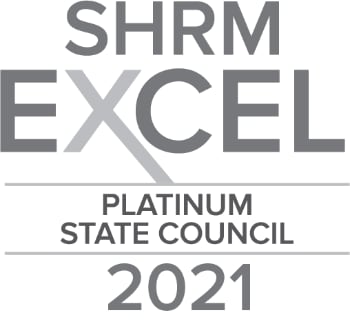Diversity inclusion refers to the practice of actively creating an environment in which each employee feels valued, respected and set up to be successful — an environment where they are comfortable being their authentic selves.
It goes beyond simply recognizing those inherent diversity traits, like gender, race, ethnicity and natural ability, and extends to those acquired diversity traits that we gain from our life experiences and impact how we think.
This two-dimensional form of diversity inclusion encourages employees to be vulnerable and express their opinions and ideas without fear of judgement or rejection. And the benefits to an organization can be significant.
Diversity in 2D
Our life experiences — the way we were raised, the things that have happened to us, the people we have met, the places we have been — all contribute to who we are and how we operate on a daily basis. They influence how we process information, communicate, react to situations and complete tasks. Because we each have different life experiences, we have different ways of thinking — this is our acquired diversity.
Inherent diversity and acquired diversity are not mutually exclusive, however. Differences in gender, race, ability and other inherent diversity traits in and of themselves can dictate different experiences we have, thus influencing how we think.
For example, someone who was born in a different country has had different experiences simply because of their national origins. They may have a different way of going about their daily life or approaching situations than someone who grew up in the United States. Even on a smaller scale, someone who was born and raised in a small Indiana town has likely had different life experiences than someone who grew up in a large coastal city, like Los Angeles.
For an organization, creating a workforce with this two-dimensional diversity in mind provides the opportunity for a variety of unique minds with unique perspectives to address problems or generate ideas. This often results in more innovative, effective solutions.
Business Benefits of Thought Diversity
Encouraging thought diversity and freely sharing perspectives does require an important disclaimer — it does not permit racism, sexism or bullying in the name of sharing an opinion. Instilling an overarching culture of respect in the workplace means creating a safe place for people to share ideas free of discrimination.
Deloitte consulting firm has conducted several research studies on diversity of thought. When implemented within this culture of respect, they found it results in several key benefits:
1. Thought diversity helps to combat “groupthink” and overconfidence from experts.
According to Psychology Today, “groupthink” occurs when a group makes certain decisions in order to keep the harmony. Individual members of the group are not encouraged to disagree or provide alternate perspectives, with the priority being consensus. This stifles the opportunity for creativity and promotes doing things as they have always been done or as the leader of the group thinks they should be done.
Deloitte’s research shows that bringing diverse minds to the table and encouraging them to share their opinions and ideas fosters more careful and creative information processing and decision making, leading to better results. This process is much less likely to occur in groups of people who are very similar to each other. Full group participation can also deliver better insights than if the decision was left up to a single expert.
2. Thought diversity helps to quickly scale new ideas.
Traditionally, specialists and subject matter experts are consulted to devise a solution to a pressing problem. Deloitte suggests, however, that consulting a diverse group, including non-experts, helps to connect multiple tasks and ideas together in a new way. This can generate successful ideas more quickly, allowing them to be implemented and scaled more immediately.
3. Encouraging thought diversity helps identify the best employees to handle critical issues.
Allowing employees to reveal their unique perspectives and thought patterns helps leadership better align individuals with specific jobs or projects based on their strengths. Cognitive tests like Myers-Briggs and Enneagrams can aid in this process, and advances in neuroscience and technology may soon have even faster, more accurate ways to make these matches.
In short: Promoting thought diversity helps both employees and organizations realize their full potential. Something to think about.
Is your organization lacking diversity initiatives? Start creating a more inclusive culture with these three steps.






